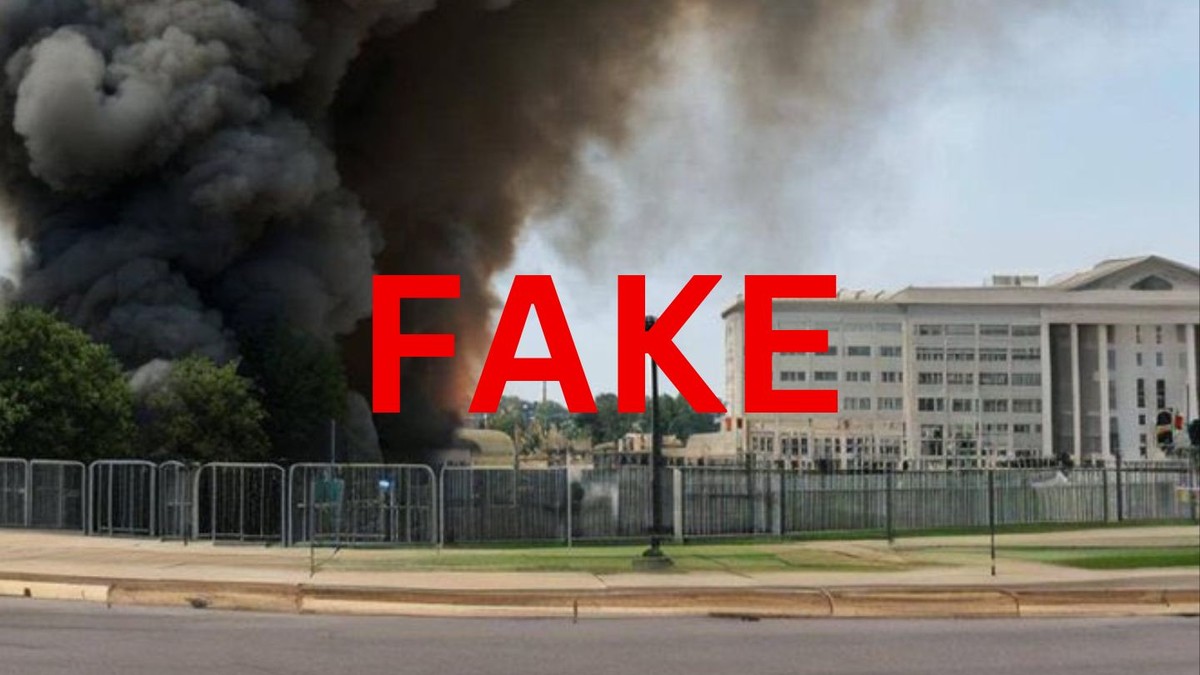[ad_1]

On Monday, dozens of verified accounts on Twitter with large followings spread misinformation about an explosion near the Pentagon, tweeting the news alongside what appears to be an AI-generated image.
Accounts such as @WarMonitors, @BloombergFeed, and RT posted an image of a large, gray smoke cloud appearing next to a white government building with a corresponding caption that stated there was an explosion near the Pentagon. Bellingcat journalist Nick Waters tweeted that there are a few signs that make it an AI image, including that the fence melds into the crowd barriers on the image and there are no other images or videos being posted on social media.
This image was quickly retweeted by many different accounts, some crediting “Twitter sources” as the original source. While some of the accounts that tweeted it out either apologized or deleted the image—@BloombergFeed was suspended—it continued to be shared by accounts that had blue checks thanks to Twitter’s pay-to-play verification system. The stock market even briefly dipped due to the fake news.
Within an hour of it being circulated, government officials stepped in to clarify that the tweets were fake news. The Arlington Fire & EMS tweeted, “There is NO explosion or incident taking place at or near the Pentagon reservation, and there is no immediate danger or hazards to the public.”
The spreading of this fake news across accounts that have up to a million followers and blue checks raises more alarm bells on how Twitter’s current structure as a result of Elon Musks’s ownership can expedite a misinformation campaign. Verification checks were once a marker of authenticity, but under Musk’s leadership, the blue checkmark now is merely a symbol that the account owner subscribes to Twitter Blue, which is Twitter’s premium plan.
This isn’t the first time that misinformation has spread from blue-check accounts since Musk took over the social media platform. In early May, several verified Twitter accounts falsely said that Russian military jets were being armed with nuclear payloads and aimed at Ukraine’s capital, Kyiv.
People have already been tricked to believe AI-generated images are real photographs as they become increasingly hyperrealistic. Images of the pope wearing a puffer jacket and Trump being arrested went viral, with many users believing both to be real events. Experts frequently warn users to be critical when seeing images online and are rallying for more regulation from social media companies, such as requiring people who post AI images to label them as generated.
[ad_2]
Source link
